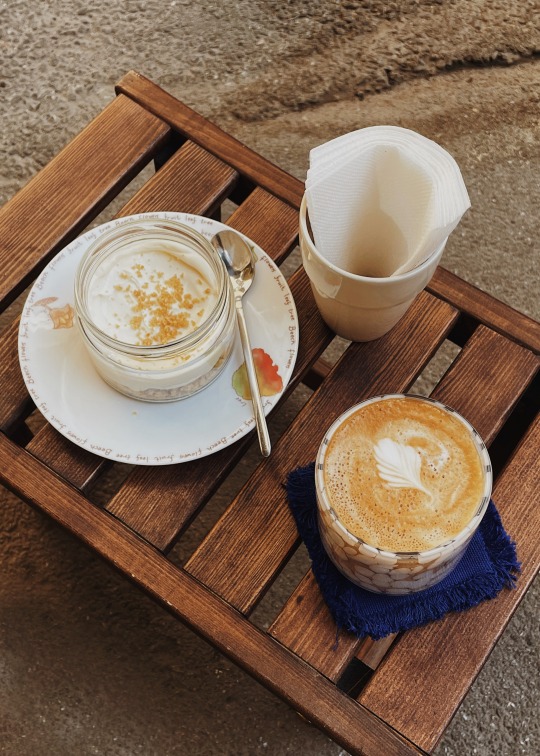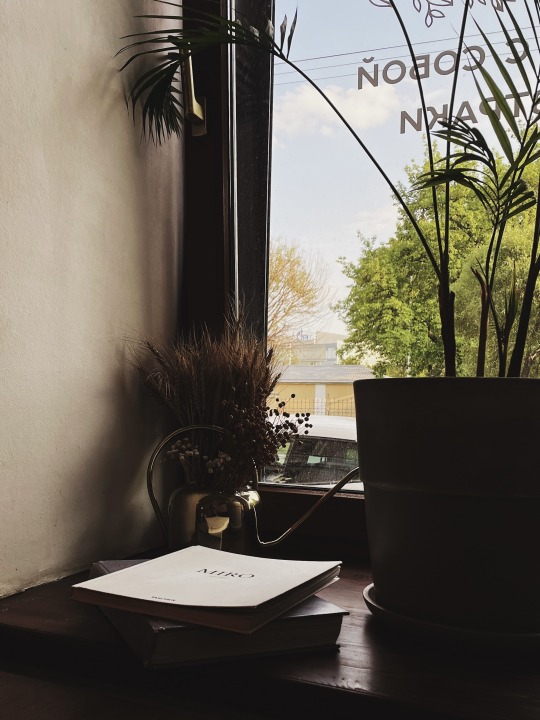#warm season planting
Text




coffee shop horoshiy tigr / saint-petersburg /
#olliiiiiiiphoto#photographer#autumn#autumn aesthetic#autumn season#photography#autumn cozy#warm colors#plant#nature#coffee shop#coffee#cappuccino#coffee aesthetic#coffee time#coffee lover#coffee cup#vans#saint petersburg#spb#санкт петербург#спб#питермоимиглазами#питер#мой блог#мой tumblr#русский tumblr#фотографспб#блог фотографа#фотограф
61 notes
·
View notes
Text

Took this at the obvious best place on earth… Stew Leonard’s
September 25th, 2021
#aesthetic#photography#mine#nature#new york#aesthetic blog#beautiful#cottagecore#plants#pumpkin#pumpkins#halloween#spooky#spooky season#cozy#warm core#fall#autumn#fall aesthetic#fall season#fall vibes#travel#tiktok#my post#newyork#long island#nature photography#naturecore#beauty#outdoors
34 notes
·
View notes
Text
I need to stop living somewhere with radiator heat. dehydrating me.
#or more practically i need to buy humidifiers it's been over 4 years#but i just want to live somewhere where my bedroom isnt 7 degrees hotter than every other#bc randomly some radiators dont function at all and the property manager doesn’t give a shit#anyways it's almost warm season ill live#which is what i say to myself every time I'm on the verge#of buying myself and my plants ones#txt
13 notes
·
View notes
Note
Can you share more about your degree? It sounds super interesting! Mine was just pretty straight forward (literature) lol.
sure!!
horticulture is never rlly easy to explain bc there's the basic definition of like "the art or practice of garden cultivation and management" according to the oxford dictionary (that i googled lol) but it's like. so many "hard" sciences and "soft" sciences mixed together. my first class was intro to horticulture and one of our tasks was to legit make our own definition.
i always explain it as the study of the art and science behind plants and how we apply them to our environments, human made or not.
i just have a two year degree bc i went to community college but it's skdkskd usually enough to get a job in the industry & work your way up. my degree was also very very hands on. during the 2020-2021 lockdown i had to go on campus despite the rest of it being closed (obv we were masked & stayed outside) but it was for classes like plant id courses, nursery production, etc
my fave classes were entomology (study of insects) & plant pathology (diseases caused by pathogens & environmental conditions!!). i also loved plant propagation (how to grow seeds!!!!) and it led to how i chose my certification in greenhouse production!! i learned basically how a greenhouse runs & how to manage it!! (i have a second certificate in permaculture (permanent agriculture in which you learn how to garden but it's a self sustaining ecosystem based on where u live!!) but that is based on a number of hours completed rather than taking a bunch of classes)
there is also a huge push for sustainability! lots of my professors had their docorates and masters in climate science and were very open & honest abt the way of the world & how gray it is in terms of what we make advancements in. (first class ever we talked abt gmos which are a touchy subject a lot of the time. they have their bads and goods. it's very messy as a topic & no clear answer on what to do bc they can't just get rid gmos but also? can't we do better with them?)
it's also learning abt how the industry in terms of sales & how plants grown travel. learning at shipments & the amt of mileage with a semi truck vs other forms of transport. how much each stop in the supply chain gets when you buy groceries (shopping local vs. big box stores).
i also did a project with my old high school in designing an outdoor classroom for them & learned abt designing a landscape (this was specifically one using mostly native plants!)
we would go to local forest preserves to learn about different ecosystems and biomes and why native plants are best but also how the majority of plants brought over, like, 80%, are not invasive. we did learn abt invasive plants as well and were very carefully instructed on proper control for pests (ranging from plants to insects to bacteria to virus... altho if your plant catches a virus... godspeed). chemical controls are ALWAYS a last resort.
we would go to local nurseries and greenhouses and farms to learn abt how they run!!!
it was just so much hands on learning and better understanding how the world works while also being told straight up where the world is heading (esp with climate change which will lead to inevitable zone shifting for what plants can grow where) and it's just augh!! so broad idek what to specifically go in on!! it's an amazing field!!
#i didn't even get into agricultural studies and arboriculture (trees) and landscape design & management (my least fave tbh)#we also had our own farm on campus that provided vegetables for the cafeteria during the warm seasons#and had a farmers market one day a week#we had a plant sale every year and our classes would basically be the ones that GROW THE PLANTS for the sales#literal hands on experience throughout#i am always sad i struggle with finding smth where i live now that's in my field but#i'm hopeful....#rose answers#evilwriter37#thank u for asking!!!
12 notes
·
View notes
Text
We've hit the point in the year where if it doesn't become spring immediately I'm going to lose it so I set up the balcony and hammock today and planned where the big plants will go and hung up hangers for the small plants. And now I'm outside under a blanket and Pesto is outside in his little enclosure
#it is 38 degrees there is snow on the ground#i have at least two months before i can bring plants out for good#but i miss warm outside bring back warm outside ☹️#this post brought to you by seasonal depression
4 notes
·
View notes
Text
okay okay
i'm gonna talk abt the go2 finale scene (yk which one) bc i won't be able to function if i can't get this out of my head
spoilers ahead you've been warned
"we could have been... us" and that grab, pull and kiss.
crowley needed aziraphale to know what exactly he wanted. he needed aziraphale to know that it's not all that easy, going back to heaven and attempting to change it all so that it would actually be for the Good. he needed aziraphale to know that he was head over heels in love w his angel and he just wanted them to be happy doing their own little things- breakfasts (alcoholic), feeding frozen peas to the ducks and watering plants and not-selling books.
the kiss was everything- hard, desperate, loving- everything crowley's ever felt about aziraphale pushed into that one confession.
"i forgive you" three little words-
-and crowley knew that his heart's just been broken into bits and suddenly everything just fell into drab colours and melancholy music.
i forgive you means a mistake done by the other.
i forgive you means there could've been a huge something (there could've been an us) but i cannot see it yet.
i forgive you means heartbreak.
crowley's face was so resigned and closed off, when all he wanted was to be with aziraphale somewhere in a little pocket of the universe.
he watches, waits for his angel until the bloody end, but stands witness to aziraphale walk away with metatron into his new role and duties and he tries so hard not to think. he'd rather not think at all.
(and maybe, just maybe, his angel is gonna learn and know more and realise that it's never what they've done together- it's the system that's deeply flawed- and until then he'll wait. he'd waited 6000 years, he can wait some more)
#good omens s2#good omens#good omens season 2 spoilers#good omens spoilers#gid speaketh#my baby needs a warm hug#maybe more plants and a blanket or two#he's not having a good week at all#crowley#aziraphale
9 notes
·
View notes
Text
The Spring Foraging Season Is Approaching
#i am a spring/summer hater but i loooove spruce/fir tips#i plan on making a dandelion quiche this year as well#i am a bit concerned about how such a warm winter will affect the season though#a lot of plants like to overwinter or if the warmth makes them think it is time for spring and then we get another cold snap that would not#be ideal. although i have to say i am kind of hoping for another cold snap. i don't enjoy this weather quite as much :(#nettles as well. i would like to try making this medieval nettle sauce to go with some fish#seeing as i also may be learning to fish this year. bow fishing at that. very excited but also i am a parody of myself
2 notes
·
View notes
Text
the snow falling today is so chunky
#i love chunky snowfall idk the actual word if there is one im calling it chunky snow#its so pretty I HEART SNOW YAAAAAY WINTER#that post thats like i will forget anything but it si will find whimsy in everything#(becomes spring) WOAH! new growth and flowers! beautiful! (becomes summer) i hate the heat but so many more plants blooming! the waters#warm enough to swim! long days! (becomes autumn) wow!#so gorgeous! autumn colours! nice cooler air! yay!#(becomes winter) pretty snow! beautiful! cozy inside!#drastically improves my mental health to find things to love in each season instead of just hating specific ones#pers
3 notes
·
View notes
Text
🌳☀️🌳☀️🌳☀️🌳☀️🌳☀️🌳☀️🌳☀️🌳☀️🌳☀️
I sat in this cozy crevice, in the tree roots, for a bit





🪄 ℑ 𝔣𝔬𝔲𝔫𝔡 𝔞 𝔰𝔱𝔦𝔠𝔨, 𝔠𝔩𝔢𝔞𝔫𝔢𝔡 𝔦𝔱 𝔲𝔭 𝔞 𝔟𝔦𝔱, 𝔞𝔫𝔡 𝔨𝔢𝔭𝔱 𝔦𝔱 🪄

🫶🏿𝕁𝕦𝕤𝕥 𝕒 𝕤𝕨𝕖𝕖𝕥 𝕙𝕦𝕞𝕒𝕟 & 𝕙𝕖𝕣 𝕤𝕙𝕒𝕕𝕠𝕨 🫶🏿
🌳☀️🌳☀️🌳☀️🌳☀️🌳☀️🌳☀️🌳☀️🌳☀️🌳☀️
#note to self#my diary#shadow#shadow photography#silhouette#self care#outdoors#tree#plant#stick#leaf#sunlight#warm day#cozycore#cozy vibes#nature vibes#aquarius season#goblincore#tree roots#public park#chill vibes#mine#self love#happy friday#naturecore#sunshine#relaxing#tiny plants
4 notes
·
View notes
Photo

My photography, please leave credit. :)
#fall#autumn#nature#sunny#october day#colorful#plants#tree#path#lovely#seasonal#warm#original photography#mine
3 notes
·
View notes
Text



📍 Saint-Petersburg / @cake_shop_spb
#olliiiiiiiphoto#autumn#photographer#autumn aesthetic#autumn cozy#autumn season#plant#warm colors#coffee#coffee shop#coffetime#cafe#coffee aesthetic#coffee hour#book store#book aesthetic#books and reading#reading#photoblog#my photgraphy#photography#phone#food photography#dark academia#dark aesthetic#autumn colors#lifestyle blog#блог фотографа#русский tumblr#жизнь
22 notes
·
View notes
Photo

amiguets d tardor <3
#artwork#traditional art#digital art#mixedmedia#Illustration#illustrator#sketch#sketchbook#doodles#doodle#comic#cartoon#design#autumn#fall#fall season#fall aesthetic#october#warm#plants
2 notes
·
View notes
Text
youtube
#cocteau twins#ethereal wave#shoegaze#literally this song... I loathe this time of year so much it is so depressing because everything's dead from summer and it hasn't yet#started raining enough for the green plants to come in for winter#and it's not even warm like summer and all the bugs that only live for spring and summer are dead#usually it's at least a bit green by this time of year but there's been less than a millimetre this may so far it's really concerning#it's interesting how seasons work like in areas with different climates. here winter and spring are the yay green everything's growing#seasons#and summer and autumn are like. dead grass :) dead grass :))) too dry for many invertebrates :) the bugs? yeah they are DEAD#Youtube
1 note
·
View note
Text
I need to be drinking a margarita at a patio bar on a warm sunny day so badly
#and I know that after like 2 weeks of warm weather I’ll be over it but I need it now PLEASE#ideal climate is where the seasons change every week#and don’t talk to me about plants or the planet ok they just need to get with the program
0 notes
Text
Celery
Celery season conforms to local climate.
It could be either a warm season vegetable or a cool season vegetable. Celery, Apium graveolens variety dulce, dislikes both frost and arid heat. It is a warm season vegetable where summer is mild but winter is not. It is a cool season vegetable where winter is mild but summer is not. Where winter is cold and summer is hot, it prefers spring and…

View On WordPress
0 notes
Text
As relentless rains pounded LA, the city’s “sponge” infrastructure helped gather 8.6 billion gallons of water—enough to sustain over 100,000 households for a year.
Earlier this month, the future fell on Los Angeles. A long band of moisture in the sky, known as an atmospheric river, dumped 9 inches of rain on the city over three days—over half of what the city typically gets in a year. It’s the kind of extreme rainfall that’ll get ever more extreme as the planet warms.
The city’s water managers, though, were ready and waiting. Like other urban areas around the world, in recent years LA has been transforming into a “sponge city,” replacing impermeable surfaces, like concrete, with permeable ones, like dirt and plants. It has also built out “spreading grounds,” where water accumulates and soaks into the earth.
With traditional dams and all that newfangled spongy infrastructure, between February 4 and 7 the metropolis captured 8.6 billion gallons of stormwater, enough to provide water to 106,000 households for a year. For the rainy season in total, LA has accumulated 14.7 billion gallons.
Long reliant on snowmelt and river water piped in from afar, LA is on a quest to produce as much water as it can locally. “There's going to be a lot more rain and a lot less snow, which is going to alter the way we capture snowmelt and the aqueduct water,” says Art Castro, manager of watershed management at the Los Angeles Department of Water and Power. “Dams and spreading grounds are the workhorses of local stormwater capture for either flood protection or water supply.”
Centuries of urban-planning dogma dictates using gutters, sewers, and other infrastructure to funnel rainwater out of a metropolis as quickly as possible to prevent flooding. Given the increasingly catastrophic urban flooding seen around the world, though, that clearly isn’t working anymore, so now planners are finding clever ways to capture stormwater, treating it as an asset instead of a liability. “The problem of urban hydrology is caused by a thousand small cuts,” says Michael Kiparsky, director of the Wheeler Water Institute at UC Berkeley. “No one driveway or roof in and of itself causes massive alteration of the hydrologic cycle. But combine millions of them in one area and it does. Maybe we can solve that problem with a thousand Band-Aids.”
Or in this case, sponges. The trick to making a city more absorbent is to add more gardens and other green spaces that allow water to percolate into underlying aquifers—porous subterranean materials that can hold water—which a city can then draw from in times of need. Engineers are also greening up medians and roadside areas to soak up the water that’d normally rush off streets, into sewers, and eventually out to sea...
To exploit all that free water falling from the sky, the LADWP has carved out big patches of brown in the concrete jungle. Stormwater is piped into these spreading grounds and accumulates in dirt basins. That allows it to slowly soak into the underlying aquifer, which acts as a sort of natural underground tank that can hold 28 billion gallons of water.
During a storm, the city is also gathering water in dams, some of which it diverts into the spreading grounds. “After the storm comes by, and it's a bright sunny day, you’ll still see water being released into a channel and diverted into the spreading grounds,” says Castro. That way, water moves from a reservoir where it’s exposed to sunlight and evaporation, into an aquifer where it’s banked safely underground.
On a smaller scale, LADWP has been experimenting with turning parks into mini spreading grounds, diverting stormwater there to soak into subterranean cisterns or chambers. It’s also deploying green spaces along roadways, which have the additional benefit of mitigating flooding in a neighborhood: The less concrete and the more dirt and plants, the more the built environment can soak up stormwater like the actual environment naturally does.
As an added benefit, deploying more of these green spaces, along with urban gardens, improves the mental health of residents. Plants here also “sweat,” cooling the area and beating back the urban heat island effect—the tendency for concrete to absorb solar energy and slowly release it at night. By reducing summer temperatures, you improve the physical health of residents. “The more trees, the more shade, the less heat island effect,” says Castro. “Sometimes when it’s 90 degrees in the middle of summer, it could get up to 110 underneath a bus stop.”
LA’s far from alone in going spongy. Pittsburgh is also deploying more rain gardens, and where they absolutely must have a hard surface—sidewalks, parking lots, etc.—they’re using special concrete bricks that allow water to seep through. And a growing number of municipalities are scrutinizing properties and charging owners fees if they have excessive impermeable surfaces like pavement, thus incentivizing the switch to permeable surfaces like plots of native plants or urban gardens for producing more food locally.
So the old way of stormwater management isn’t just increasingly dangerous and ineffective as the planet warms and storms get more intense—it stands in the way of a more beautiful, less sweltering, more sustainable urban landscape. LA, of all places, is showing the world there’s a better way.
-via Wired, February 19, 2024
#california#los angeles#water#rainfall#extreme weather#rain#atmospheric science#meteorology#infrastructure#green infrastructure#climate change#climate action#climate resilient#climate emergency#urban#urban landscape#flooding#flood warning#natural disasters#environmental news#climate news#good news#hope#solarpunk#hopepunk#ecopunk#sustainability#urban planning#city planning#urbanism
14K notes
·
View notes